Bologna, Italy: The Great Music City
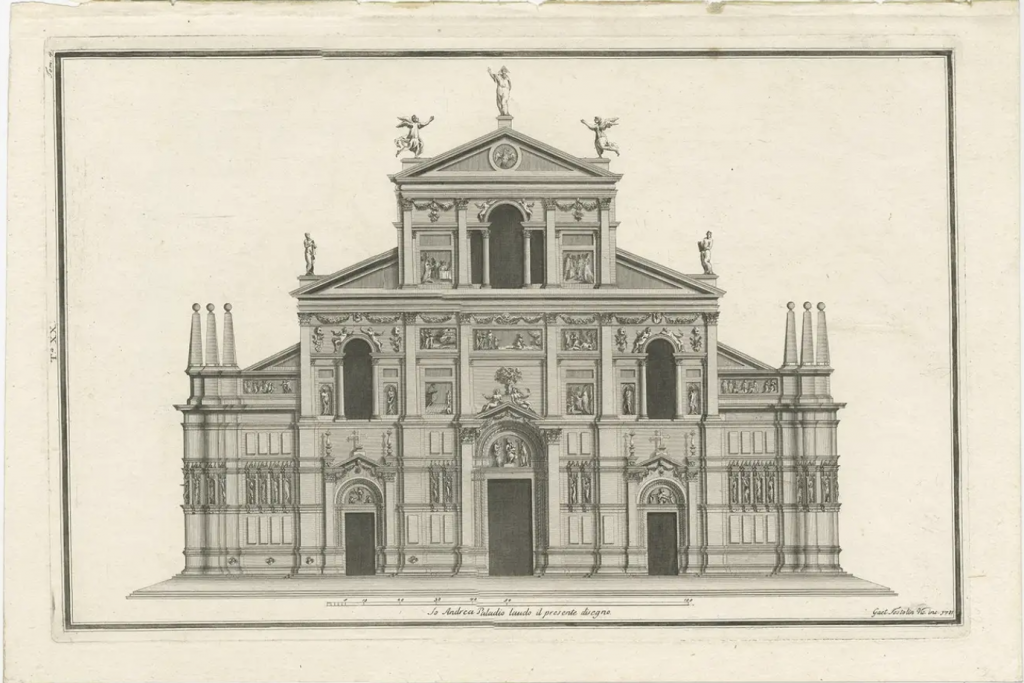
During the 17th and centuries, the city of Bologna in Italy was a very important music center. This, however, had largely gone unrecognized until very recently. In fact, 20th Century musicologist Arnold Schering was the first scholar outside of Bologna to recognize this fact. In his monumental work Music in the Baroque Era, Manfred Bukofzer only devoted four of the almost 500 pages of his book to Bologna, and these only to a coverage of instrumental music, not including the magnificent choral creations that were written and performed there.
Still to this day, Bologna has not been fully recognized as the important music center that it once was, and few musicians and music lovers realize the important music and the incredible composers who blossomed there during its musical heyday.
The two most important music institutions in Bologna were San Petronio, and the Accademia Filarmonica.
San Petronio
Founded in 1390, the Basilica of San Petronio was dedicated to a fifth-century bishop, and it ranks as one of the greatest medieval brick cathedrals in Italy. It employed thirty-six musicians on a full-time basis during its heyday and on special occasions hired as many as 153. It was in this cathedral where music was splendidly performed, especially on special days of the liturgical year.
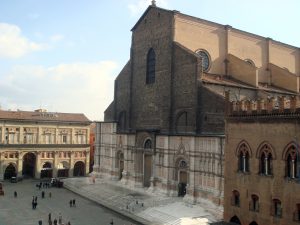
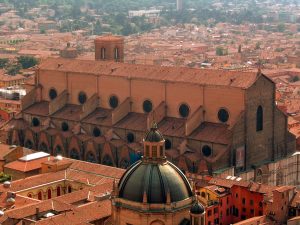
The Accademia Filarmonica
The Accademia Filarmonica, or the Philharmonic Academy of Bologna, was established in 1666 by Vincenzo Maria Carrati to “form a long-lasting unity dedicated to making beautiful music” and continues to exist today. Early members included Giovanni Paolo Colonna (one of the founders), Arcangelo Corelli (1670), Giacomo Antonio Perti (1688), Giuseppe Maria Jacchini (1688), Giuseppe Maria Orlandini, Antonio Maria Bernacchi (1722), Giovanni Carestini (1726) and the celebrated castrato singer Carlo Farinelli (1730). The composer and teacher Giovanni Battista Martini taught at the Accademia from 1758.
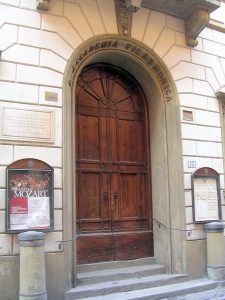
The Composers
There are an amazing number of important composers associated with Bologna:
Maurizio Cazzati (1620-1677)
Giovanni Paolo Colonna (1637-95)
Giovanni Maria Bononcini (1642-1678)
Giovanni Bononcini (1670-1755)
Giovanni Battista Vitali (1644-1692)
Tomaso Antonio Vitali (1663-1745)
Ercole Gaibara (c. 1620 – 1690)
Bartolomeo Laurenti (1644-1726)
Pietro degli Antonii (1468-1720)
Petronio Franceschini (1650-1681)
Domenico Gabrielli (1655-1690)
Giovanni Battista Bassani (1657-1716)
Giuseppe Maria Jacchini (1667-1727)
Giuseppe Torelli (1658-1709)
Giacomo Antonio Perti (1661-1756)
Pirro Albergati (1663-1735)
Giuseppe Aldrobandini (1665-1707)
Evaristo Dall’Abaco (1675-1742)
Arcangelo Corelli (1653-1713)
Giuseppe Matteo Alberti (1685-1751)
Giambattista Martini (“Padre Martini” 1706-1784)
Music libraries of northern Italy contain a huge number of compositions created by Bolognese composers, especially in the Civico Museo Bibliografico Musicale in Bologna. These have yet to be transcribed into modern editions.
The antiphon “Quaerite primum regnum Dei.” This is an examination exercise of Padre Martini’s pupil, the 14-year-old Mozart. (9 October 1770, Bologna)
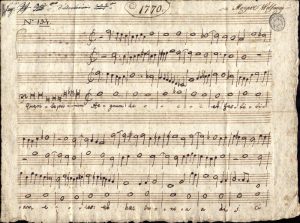
Choral Music in the “Concerted Style”
The music that flourished in the great Bolognese Era was composed in the manner of style that was called concerted (concertato in Italian). Concerted music originated with the concerto. The first known use of the term “concerto” was in a publication from the Concerti di Andrea, et di Gio. Gabrieli (Concertos of Andrea and of Giovanni Gabrieli) that was first published in Venice, Italy in 1587. It contained church music and madrigals for voices and instruments in six to sixteen parts. Giovanni Gabrieli and his uncle Andrea Gabrieli were creating music in a revolutionary new style in St. Mark’s Basilica in Venice, a style that blended instruments with voices. Their magnificent compositions were the first awakening of the new upcoming era that we call the “Instrumental Music Era” that will characterize the music of the 17th century and then continuing to develop through the centuries, replacing the previous 700-year era of polyphonic music.
The concerted style was expanded by Monteverdi and other composers during the first half of the 17th century. Liturgical compositions in the concerted style that were intended for vespers and the mass were scored for choir, vocal soloists, a small string orchestra and an organ continuo. The 1610 mass by Venetian composer Alessandro Grandi (1590-1630) was one of the first sacred choral music compositions in the 17th-century style. The first concerted mass that would include a full five-part ensemble of instruments was a 1620 mass composed by Ercole Porta (1585-1630).
“…it is evident that the violin was the favoured instrument of the ceremonial mass by the 1630s. Its role changed from providing extra-liturgical canzonas and sonatas to being incorporated into the fabric and form of the mass.”[1]
The Instrumental Music
In 1657, Maurizio Cazzati (1620-1677) was appointed the maestro di cappella for the Basilica San Petronio. Cazzati was the composer who created what is now called the Bologna School (style of music). Cazzati’s main claim to fame was instrumental music, and Bologna became a center of development for instrumental dance music.
Giovanni Battista Vitali (1632-1692) was born in Bologna and was primarily a string player (violone) and composer of string music, especially the trio sonata. He joined the orchestra of the Basilica San Petronio in 1658 and began studying with Cazzati, San Petronio’s maestro di cappella and director of chamber music. Like his contemporaries, Vitali’s output was primarily dance music. His style was based on that of Cazzati, his teacher. Before the ascendency of a Arcangelo Corelli (1653-1713), Vitali was the most influential and prolific composer of the Bologna school.
Vitali had been appointed as a violine player at San Petronio in 1666, and became a founding member of the Accademia Filarmonica, established that same year. Most of his published compositions were secular string music. Also, during the pivotal year of 1666, 13-year-old Arcangelo Corelli (1653-1713) had arrived in Bologna and begin studying with violinists Benvenuti and Brugnoli. Corelli became a member of the Accademia Filarmonica in 1670, then moved to Rome in the following year. Vitali left in 1674, having accepted an appointment in Modena, about 30 miles northwest of Bologna. Giuseppe Torelli (1658-1709) was a violetta player in the chapel from 1685 to 1695.
Maurizio Cazzati, Claudio Merulo (1533-1604) and Giovanni Legrenzi (1626-1690) were composers whose works “provided both the framework and the essential constituents of the late 17th-century sonata, although Legrenzi ultimately pursued more independent paths.”[2]
Trio sonatas: The trio sonata is a genre, typically consisting of several movements, with two melody instruments and continuo. Originating in the early 17th century, the trio sonata was a favorite chamber ensemble combination during great string era of the late 17th and early 18th centuries. There were two types of trio sonata: sonata da chiesa (church sonata) and sonata da camera (danse suite).
Solo violin sonatas: Bolognese composers took the still-experimental solo violin sonata by Cazzati and developed the form into a magnificent art form. “They created a style which for nobility and charm is unparalleled in 17th-century Italy”[3]
Concerti grossi: Music in the style known as the concerto grosso was composed in Bologna. These concertos contrasted a group of soloists with the orchestra.
